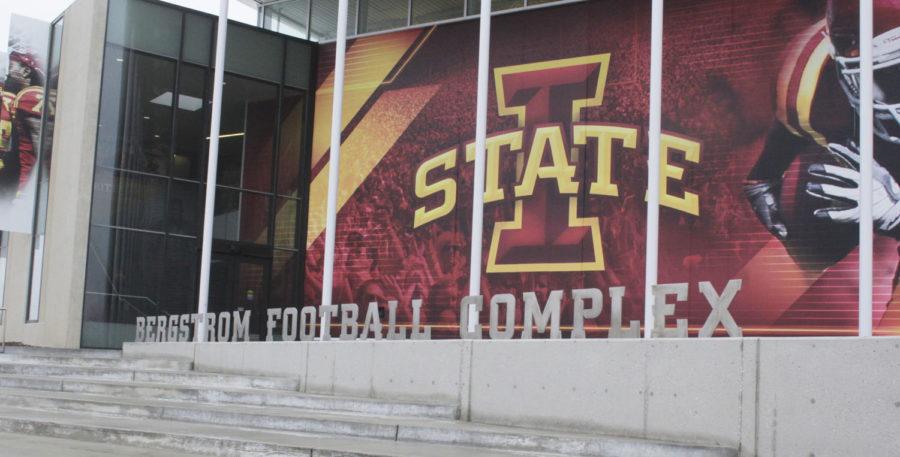Bergstrom Football Complex receives Leadership in Energy and Environmental Design silver certification
Kelby Wingert/Iowa State Daily
The Bergstrom Football Complex is the seventh ISU building to receive a Leadership in Energy and Environmental Design silver certification from the U.S. Green Building Council.
February 21, 2014
The Bergstrom Football Complex received a Leadership in Energy and Environmental Design silver certification from the U.S. Green Building Council.
Bergstrom is the seventh ISU building to receive a LEED certification.
“It’s a way for us to document the sustainability measures that we use when we design and build buildings,” said Kerry Dixon, coordinator of sustainable design and construction.
Some of the major factors that contributed to the Bergstrom project’s LEED certification included recycling construction waste and keeping material purchases local.
Approximately 98 percent of the waste left over by the construction of the building was recycled, and 12 percent of the materials used during construction were extracted and manufactured within a 500-mile radius of Iowa State’s campus.
The construction also reduced the building’s water consumption by 53 percent compared to a building designed to state code, and it has at least three CyRide routes near the building that are frequently running every day.
The building does operate energy-efficiently and at a lower cost than most buildings on campus, and anyone who walks into the building would feel as comfortable as if they were walking into any other building.
Merry Rankin, ISU director of sustainability, said that the Bergstrom building is sustainable in the functions that it is meant to achieve and in its operations. She also said that the building not only looks interesting, but the building operates effectively and efficiently.
“We use certain controls within the lighting that helps reduce the amount of power that’s used to operate the building,” Dixon said. “We’ve reduced water consumption by 53 percent without causing a sense of uncomfortableness. The showers don’t feel like there are dribbly amounts of water going out. There’s adequate shower pressure and water pressure.”
Any building that earns a LEED certification can receive a basic, silver certification, gold or platinum certification.
Iowa State currently has six other LEED-certified buildings.
They include: Morrill Hall, silver; King Pavilion at the College of Design, platinum; Hach Hall, gold; the Biorenewables Research Laboratory, gold; State Gym, platinum; and the Small Animal Hospital at the Lloyd Veterinary Medicine Center, gold.
The Iowa Board of Regent’s sustainability plan states that all new buildings at Iowa’s three regent schools should strive to receive a LEED silver certification.
Iowa State, though, tries to have all its buildings achieve a LEED gold certification.
Other than the positive impact that the Bergstrom building will have on the environment, Iowa State’s new buildings are built to last for decades. As most common buildings are built to last a maximum of 20 years, Iowa State strives to make their buildings last 50-100 years.
“We’re designing buildings that need to last,” Dixon said. “A sustainable building is one you don’t have to tear down and can reuse as much as you can.”
The Bergstrom Football Complex opened in November 2012 and was approved for a budget of $20.6 million.
“Iowa State really deserves a lot of credit in being very visionary and very proactive in looking at how we build our buildings, how we design our buildings and constructing them in a manner that is very efficient,” Rankin said.







